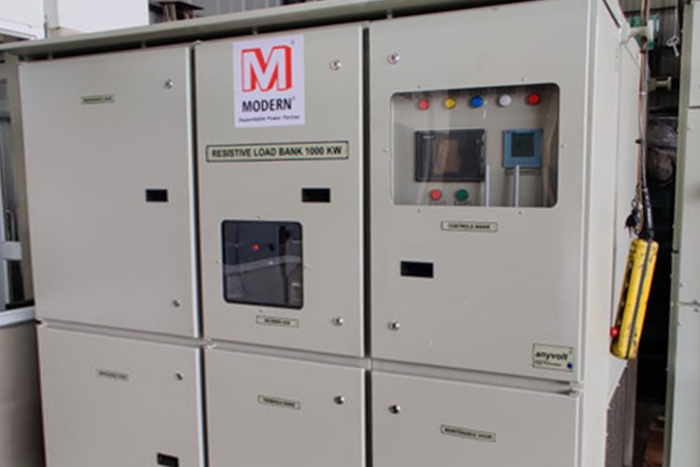
Difference between Resistive Load and Reactive Load Bank
What is Load Bank?
When it comes to industries, Load Banks are one of the most essential equipment. Every enterprise should have this equipment as it ensures the proper running of industrial machines/equipment, in case, of power outages.
This great equipment also has the efficiency to take a similar load for running power source equipment. Load bank testing is the process of accessing a generator’s capability and verifying its components. There are four types of load banks to be used for testing generators, such as Resistive, Reactive, Combined resistive/reactive, and Electronic.
Today, we will focus on what is Resistive and Reactive load bank and what are the differences between these two.
Resistive Load Banks:
Among all the types of load banks, it is the general or standard type of load bank that a power source will see in actual use. Using a power resistor and air or water, it can convert electrical energy or current into heat. Light bulbs, space heaters, or hot plates, are the best examples of it. Considering its portability to the size or its power range, resistive load banks come in a wide range of options. It also allows the user to test according to your specific design criteria and operational needs.
How does it work?
As mentioned above, it converts all of the applied electrical energy into heat. Some larger kilo Watt load banks have an integrated blower for cooling whether some load bank does not have their cooling system. In this case, it relies on cooling airflow from other sources such as an engine radiator. If you have full kW load testing, choose an equal capacity of load bank.
Reactive Load Banks:
It is used to reproduce systems exaggerated by electromagnetic devices or electric motors on a power network. This type of load bank can create either an inductive or capacitive load, which depends on the kind of load estimated on the power system. It can convert current into a magnetic field and can resist the change to voltage, which causes the circuit current to lead voltage.
How does it work?
These load banks test the full apparent load in kilovolt-ampere (kVA) of the power source. These models are part of the testing requirements set out by NFPA 110 for non-entity power factor equipment field or factory acceptance testing. Reactive load banks test for systems that have the sensitivity to voltage dips.
If you are ready to get one of the best-prepared models or need a custom option on rent, visit us and get the load banks, you need at a friendly budget.

